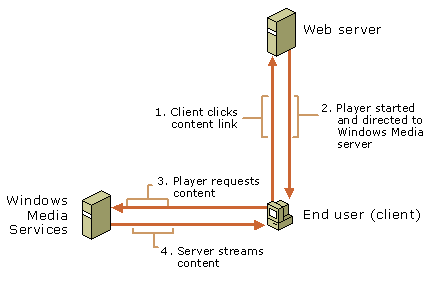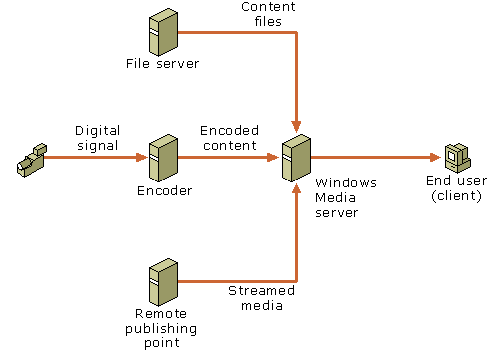

|
A streaming media system based on Windows Media Technologies typically consists of a computer running an encoder (such as Microsoft Windows Media Encoder), a server running Windows Media Services, and players. The encoder enables you to convert both live and prerecorded audio, video, and computer screen images to Windows Media Format. The server running Windows Media Services, called a Windows Media server, enables you to distribute the content over a network. Users receive the content you distribute by using a player, such as Windows Media Player.

In a typical scenario, a user clicks a link on a Web page to request content. The Web server redirects the request to the Windows Media server and opens the player on the user's computer. At this point, the Web server no longer plays a role in the streaming media process and the Windows Media server establishes a direct connection with the player and begins streaming the content directly to the user.

The Windows Media server can receive content from several different sources. Prerecorded content can be stored locally on the server or retrieved from a networked file server. Live events can be captured using a digital recording device and processed through an encoder before being sent to the Windows Media server for broadcast. Windows Media Services can also rebroadcast content streamed from a publishing point on a remote Windows Media server.
 Note
Note